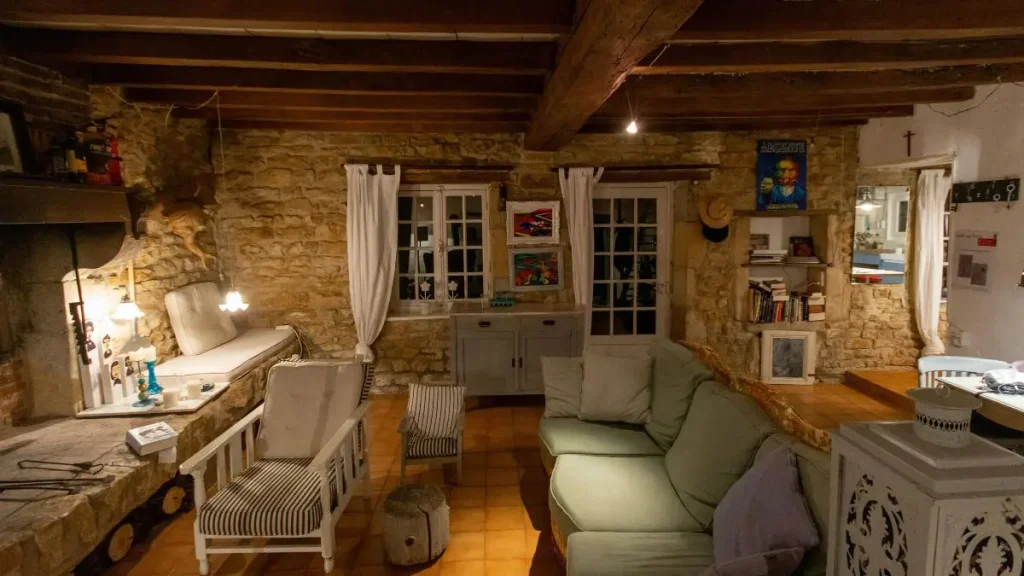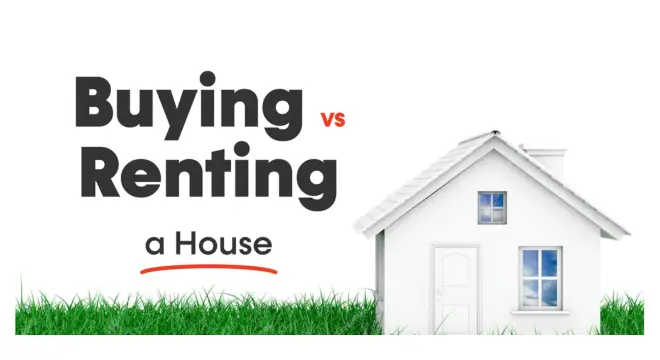President Donald Trump’s Childhood House Listed in the Market for $2.3M
If you ever find yourself walking through the quiet, tree-lined streets of Jamaica Estates in Queens, there’s a Tudor-style home that instantly stands out — not because it’s flashy, but because of the story it holds. This is where Donald Trump’s life began. Long before the towers, the campaigns, and the headlines, he lived here as a boy, surrounded by the simple hum of neighborhood life.
When I first read that the house was hitting the market again — this time for $2.3 million — I wasn’t surprised. Real estate tied to famous names always finds its way back into the spotlight. But this one’s different. It’s not just a property; it’s a time capsule. Built by Fred Trump in 1940, this five-bedroom Tudor has seen more economic cycles, ownership flips, and cultural debates than most homes ever will.
You can almost picture that moment in history: Fred designing the house himself, young Donald running through its narrow halls, the kind of family life that shaped one of the most polarizing figures in modern politics. Decades later, here we are — watching another owner try to turn that nostalgia into a profit.
As a reader and real-estate observer, you might wonder: what makes this particular listing worth talking about again? It’s not just the Trump name. It’s the pattern — how a modest childhood home became a speculative asset, then an Airbnb spectacle, and now a fully renovated “collector’s item” in one of Queens’ priciest zip codes.
That’s the story I want to unpack with you — how this little Tudor on Wareham Place became both a piece of history and a mirror reflecting America’s obsession with fame, value, and legacy.
So let’s start from the beginning.
From Family Roots to Fortune: The Early Trump Years

When you trace Donald Trump’s life back to its quiet beginning, you land right here — 85-15 Wareham Place, Jamaica Estates. According to a detailed report on Realtor, this five-bedroom Tudor was built by his father, Fred Trump, in 1940. It was one of his early personal projects, a family home designed with the same care he later poured into the apartment buildings that made the Trump name a fixture in New York real estate.
I like to think about how ordinary this house must have felt back then. No gold fixtures, no media buzz — just a young family building its foundation. Donald lived here until he was four. Then, as the family’s fortunes grew, Fred moved them to a bigger home nearby — the first real sign of the upward climb that would define the Trump story.
If you look closely at the house today, you can still feel that contrast — humble roots wrapped in ambition. And maybe that’s what gives this property its strange pull: it’s proof that even the most powerful legacies start small.
The Million-Dollar Journey: A House With Many Lives
What happened after the Trumps moved out could fill a mini-series. The home passed quietly from one owner to another — until it suddenly became a speculative lightning rod during the 2016 election.
As The New York Post reported, on election night that year, Michael Davis, a Manhattan private-equity partner, bought the property for about $1.39 million — just hours before the results came in. Everyone thought Hillary Clinton would win. Davis took a gamble. And when Trump actually did, that gamble paid off big. On Inauguration Day 2017, he flipped it for $2.14 million to a buyer in China.
Then the story got weirder. Davis rented it back and listed it on Airbnb for roughly $800 a night. The home was filled with Trump memorabilia — plaques reading “In this bedroom, Donald J. Trump was likely conceived,” a cardboard cutout in the living room, and stacks of The Art of the Deal. It wasn’t just a rental; it was a statement piece.
But not all publicity is good publicity. When a charity group used the property to stage a refugee-awareness event during the U.N. General Assembly, the owner pulled the plug on the Airbnb era. Within a year, the house was abandoned again — pipes burst, mold spread, and what was once a viral sensation quietly decayed.
It’s fascinating — and a little tragic — how fast “historic” can turn into “haunted” when profit overshadows care.
We’ve seen similar stories in Hollywood, too — like Nicole Scherzinger’s Hollywood Hills home, which went through multiple listings and price cuts before finding the right buyer.
The $835K Revival: Tommy Lin’s Risk and Reward
Then came Tommy Lin, a local real-estate developer who saw potential where everyone else saw trouble. When the house resurfaced off-market earlier this year for $835,000, Lin jumped. “It wasn’t politics,” he told reporters — it was opportunity.
For eight months, Lin and his team stripped the house to its studs. They kept the iconic Tudor exterior but completely reimagined the inside — smart door locks, smart toilets, a bright sunroom overlooking the yard, and yes, the original wood-burning stove that’s been there since 1940. He spent roughly $500,000 on the renovation, bringing his total investment north of $1.3 million.
I like this part of the story because it shifts from nostalgia to craftsmanship. It’s about a builder reviving another builder’s work — one generation honoring another, even if separated by politics and time. Lin isn’t betting on ideology; he’s betting on design, storytelling, and Queens’ steady property values.
Inside Jamaica Estates: The Neighborhood’s Market Pulse
If you’re not from New York, let me paint you a quick picture. Jamaica Estates isn’t your average Queens neighborhood. It’s green, quiet, and just 14 miles from Manhattan — a suburban pocket for professionals who want space without leaving the city.
According to data from Realtor.com, the median home price here was $1.5 million as of September 2025. There are currently eight listings above $3 million, and earlier this year, a six-bedroom home sold for $4 million. Against that backdrop, Lin’s $2.3 million listing suddenly looks strategic, not outrageous.
And yet, this isn’t just about square footage. It’s about story. Buyers in this price bracket want connection — to history, prestige, or even irony. A chance to say, “I live in the house where Donald Trump took his first steps.” For some, that’s value you can’t measure in comps.
If you were shopping in Jamaica Estates today, you’d probably compare this home not just by price, but by narrative — and that’s where it wins.
If you enjoy real estate stories that blend celebrity history with market insight, you’ll love the kind of bite-sized updates shared daily on real estate-focused WhatsApp channels — perfect for keeping up with listings like this in real time.
The Investor’s Angle: What This Sale Teaches Us About Legacy Homes

I’ve seen this pattern before: when history meets real estate, emotion meets math. This house is a perfect example. It’s not just a listing — it’s a litmus test for how much people are willing to pay for legacy.
If you’re an investor, you might see this as a flip-and-profit case study: bought cheap, fixed smartly, leveraged name value. But you and I both know markets are fickle. Today’s buzz can be tomorrow’s burnout. Still, there’s something undeniably fascinating about how homes like this turn nostalgia into equity.
The “celebrity premium” isn’t new — but here, it’s almost symbolic. You’re not just buying walls and floors; you’re buying a story that shaped American pop culture and politics. Whether that’s worth $2.3 million? That’s up to the next buyer’s heart — and wallet — to decide.
So if you were the one signing those papers, what would you really be paying for — the house, or the history?
It’s a sentiment that echoes across cities — from Paul Newman and Joanne Woodward’s Manhattan home to other iconic addresses where fame quietly meets everyday life.
Design & Details: Where Vintage Meets Smart Tech
The first thing you notice when you step inside now is how clean and new everything feels — yet the bones of the old house are still there. That’s the sweet spot Tommy Lin aimed for: preserve what matters, upgrade what doesn’t.
You’ll find a smart lock at the front door, modern lighting throughout, and those surprisingly sleek smart toilets that feel straight out of a luxury condo. But then you glance at the brick fireplace or that old wood stove, and it pulls you back to 1940.
Lin didn’t just rebuild; he respected the space. Even the sunroom off the kitchen, which overlooks the small yard, feels like a bridge between eras — quiet, personal, human. If you’ve ever renovated a home yourself, you know how hard it is to keep character while chasing comfort.
And that’s what makes this version of the Trump childhood home feel grounded. It’s not a museum. It’s livable. Whether you care about its famous past or not, you can imagine yourself having coffee in that sunroom — and that’s good design in its purest form.
That balance between luxury and legacy also showed up in Ozzy Osbourne’s Los Angeles condo, another celebrity space that blended old-world charm with sleek modern updates.
The Human Stories: Memory, Marketing & Meaning
For me, this story stopped being about politics a while ago. It’s really about people — the ones who bought, flipped, furnished, and even laughed about this house over the years.
Remember Michael Davis, the private-equity guy who first turned it into a viral Airbnb? He once said, “I thought I’d make 100 grand. I didn’t think I’d make millions — that wasn’t on my bingo card.” You can almost hear the disbelief in his voice. To celebrate, he had custom bobblehead trophies made for his team. It’s absurd and brilliant at the same time.
Then there’s Lin, who looked at a mold-covered Tudor and saw potential — not for a headline, but for a comeback. That’s the kind of optimism I relate to.
If you strip away the name “Trump,” what you’re left with is a story about ambition, luck, and timing — the three currencies every real-estate dream runs on. And honestly, that’s why this house still matters: it keeps reminding us that property isn’t just about price; it’s about the people who pass through it.
Buying Such a Property: Practical Takeaways for You
Now, let’s step back and talk about what you can actually learn from this — especially if you’re eyeing older or “story-driven” properties yourself.
First, don’t pay for nostalgia alone. History doesn’t guarantee appreciation. Always check fundamentals — condition, structure, and resale data. If the name is what’s driving the price, walk carefully.
Second, look into legalities. Some historic or high-profile homes have hidden zoning quirks or preservation limits. A good agent (and lawyer) is worth their commission.
And third, run the math before falling for the story. Lin spent $500K on renovations because he saw tangible ROI in a neighborhood with million-dollar comps. That’s how you separate emotion from strategy.
So next time you see a “famous home” hit the market, ask yourself: Am I buying a good investment — or a great story?
Closing Perspective: More Than a Listing
When I think about this house now, it feels like more than just a piece of real estate. It’s a mirror — reflecting how America ties success to story, how value often depends on who once walked those halls.
If you strip away the politics, it’s a pretty universal idea: we all want to own something with meaning. Maybe that’s why this listing keeps coming back, no matter how many times it sells.
So, whether you’re a buyer, a dreamer, or just someone who loves old houses, I’ll leave you with this question — If a home could tell its own story, what would yours say?
If this kind of story fascinates you, don’t stop here — explore more celebrity home listings and hidden market gems in our Real Estate & Homeownership section.You’ll find everything from quiet Manhattan retreats to Hollywood hillside escapes.
Disclaimer: This article is based on publicly available reports from verified real estate data and news reports. It is intended for informational purposes only and does not constitute real estate or investment advice. All property values and ownership details are accurate as of the latest available publication date.


